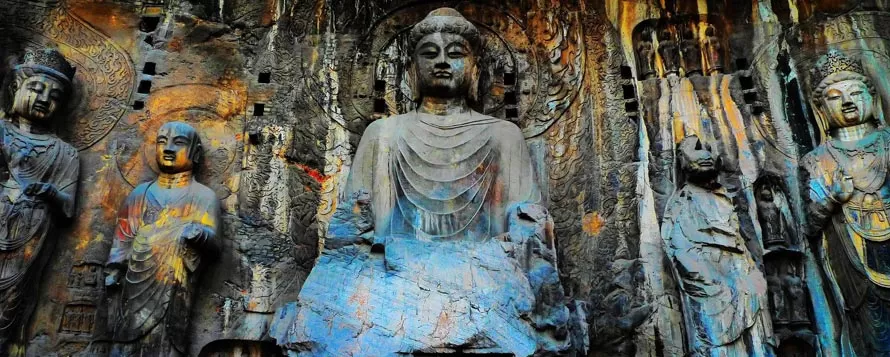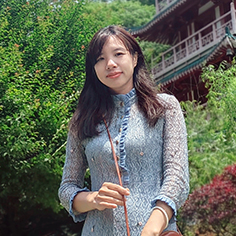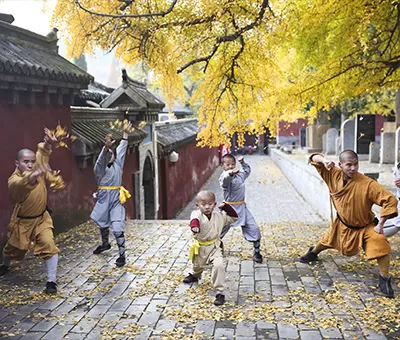Top attractions, what you must visit in a Luoyang Trip
Luoyang, also known as Luoyi or Luojing, is one of the birthplaces of Chinese civilization. With over 5,000 years of history, it served as the capital of thirteen dynasties and is famed as the “Ancient Capital of a Thousand Years and the City of Peonies.” As the eastern starting point of the Silk Road and the center of the Grand Canal of the Sui and Tang Dynasties, Luoyang played a vital role in cultural exchange and development. The city is home to the magnificent Longmen Grottoes, the White Horse Temple—honored as “China’s First Ancient Temple”—and the charming Luoyi Ancient City, where history and tradition come alive, and the world-renowned Shaolin Temple.
Top 1: Longmen Grottoes – The Eternal Smile Carved in Stone
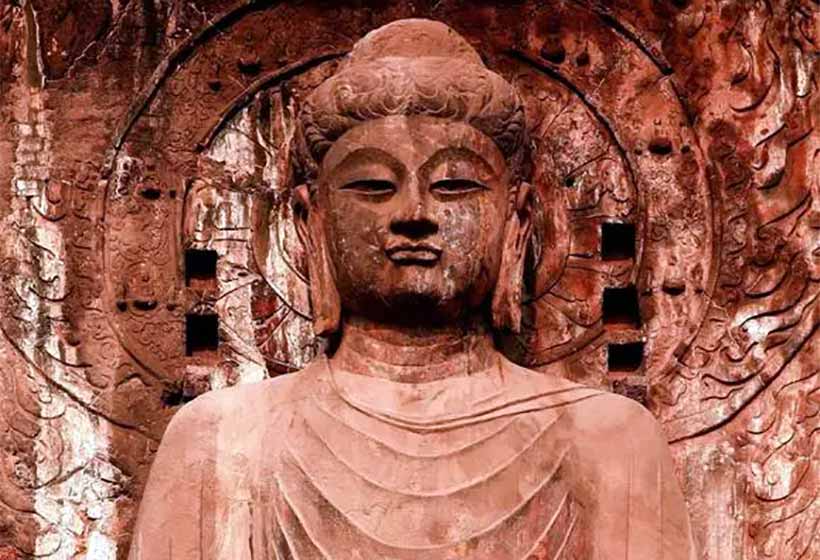 Luogmen Grottoes
Luogmen GrottoesAs one of China’s Four Great Grottoes, the Longmen Grottoes represent the pinnacle of ancient Chinese stone-carving art. Over more than 400 years of continuous construction across several dynasties, more than 100,000 statues, 2,800 inscriptions, and 40 caves were created, making it the world’s largest and most richly adorned treasury of Buddhist sculpture—hailed as “the summit of Chinese stone art.”
The grottoes embody a breathtaking variety: some Buddha figures are as small as a fingernail, while the magnificent Vairocana Buddha towers 17.14 meters high. Each sculpture reveals delicate individuality—some wear a faint smile, others appear serene or contemplative.
Most of the carvings were commissioned by imperial families and nobility, making Longmen the only grotto complex in the world created under royal patronage. Among its most remarkable works are the Vairocana Buddha modeled after Empress Wu Zetian, the Guyang Cave created by Emperor Xiaowen for his grandmother, and statues commissioned by figures such as the grandson of Prince Lanling and Gao Lishi for Emperor Xuanzong.
Surrounded by picturesque mountains, the scenic area is dotted with major attractions including the Binyang Central Cave, West Hill and East Hill Grottoes, Xiangshan Temple, Guyang Cave, and Lianhua Cave—each a masterpiece that reveals the spiritual and artistic heights of ancient China.
- Address: on the Yi River bank, 15 kilometers from Luoyang downtown
- Open Hours: 8:00-18:00 (February - March, October 8 - October 31); 8:00-18:30 (April 1 - October 7); 8:00-17:00 (November - January)
- Tour Length: 2-3 hours
Top 2: White Horse Temple – The First Buddhist Temple in China
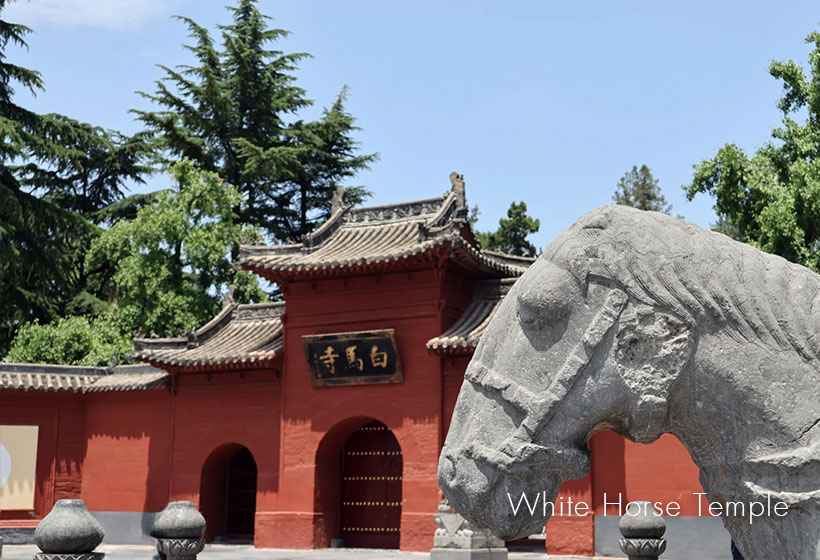 White Horse Temple
White Horse TempleBuilt in AD 68, White Horse Temple is regarded as the cradle of Chinese Buddhism, preserving the “childhood memories” of Buddhism in China. It is also the only temple in the world that features architectural styles from China, India, Thailand, and Myanmar.According to legend, Emperor Ming of Han sent envoys to India to seek Buddhist scriptures, and they returned with two monks who carried the sacred texts on a white horse — giving the temple its name.
Inside the temple stands a grand bell cast in the Ming Dynasty, weighing over 5 tons. When it tolls at five o’clock in the morning, its resonant sound can be heard more than five kilometers away. The most remarkable sight is the Qiyun Pagoda, a 13-story brick pagoda with dense eaves that has stood for over 1,500 years. Though it leans slightly to the southeast, it has remained firm and upright through the centuries, earning the title of “The First Wonder Pagoda in Central China.”
Shaded by towering ancient trees and adorned with elegant, timeworn architecture, the temple also houses the Tomb of Di Renjie, the Relic Pagoda, Four-Faced Buddha, Great Buddha Hall, Museum, Bell and Drum Towers, and serene pavilions. The temple’s deep historical and spiritual atmosphere invites visitors to slow down, listen to the morning bell and evening drum, and feel the tranquil rhythm of Buddhist devotion.
- Address: Baimasi Town, Luolong District, 23 kilometers from Luoyang downtown
- Open Hours: 07:30-18:00
- Tour Length: 1-2 hours
Top 3:Shaolin Temple – Where Zen and Martial Arts Unite
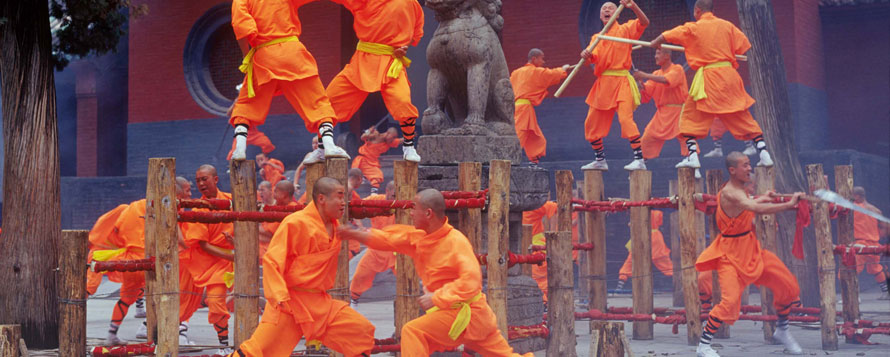 Shaolin Temple
Shaolin TempleWith a history spanning over a thousand years, Shaolin Temple embodies the perfect union of Zen and martial arts. Founded in 495 AD during the 19th year of the Taihe reign of the Northern Wei Dynasty, it is not only a place to witness the power and grace of Chinese kung fu but also to experience the serene charm of an ancient Buddhist monastery. In 2010, it was inscribed on the UNESCO World Cultural Heritage List.
Shaolin Temple, nestled deep within the forests of Mount Shaoshi—hence the name Shaolin, meaning “Temple in the Young Forest”—is the birthplace of Shaolin Kung Fu. During the Tang Dynasty, it became a prominent center of Buddhism under imperial patronage, and its martial arts gained wide recognition throughout the empire. Nearby, the Thousand Buddha Hall and the Martial Arts Training Pits showcase the profound integration of Buddhist practice and Shaolin martial arts. Today, Shaolin Kung Fu stands as one of China’s most renowned cultural symbols, with a legacy that stretches back more than 1,500 years.
The temple’s layout is symmetrically arranged along a central axis, rising with the mountain to create a solemn and dignified atmosphere. Key structures include the Mountain Gate, the Hall of Heavenly Kings, and the Mahavira Hall. The gate’s plaque was inscribed by Emperor Kangxi, featuring golden characters on a black background. Beyond the main halls, you’ll find some of Shaolin’s most remarkable sites. The Pagoda Forest, with 243 pagodas, forms the largest collection of monks’ stupas in China and is often hailed as a “Museum of Ancient Pagoda Art.” On Wuru Peak, the Bodhidharma Cave marks the legendary site where the monk Bodhidharma meditated in seclusion; inside, the “Shadow Rock” symbolizes the Chan (Zen) concept of sudden enlightenment. Together, these landmarks embody the profound spiritual and cultural legacy of the Shaolin Temple.
- Address: Songshan Mountain, Dengfeng, about 55km, 1.5 hours' drive from Luoyang
- Open Hours: 08:00-16:30
- Tour Length: 2-3 hours
Top 4: Mount Laojun – The Sacred Taoist Mountain in the Clouds
Mount Laojun, a renowned Taoist Mountain, rises 2,217 meters above sea level. At its summit, the magnificent Golden Peak is home to a breathtaking complex of Ming and Qing imperial-style buildings. Shrouded in mist and clouds, the golden temples like a celestial palace. During sunrise and sunset, the mountaintop glows with dazzling colors, earning Laojun the title of “The No. 1 Immortal Mountain in the World.”
The mountain features attractions such as Laozi Cultural Park, Dragon Chanting Spring, Central Peak Clouds, Autumn Maple Forest, and She Shen Cliff. Scattered across the mountain are ancient Taoist temples, including Taiqing Palace, Shifang Courtyard, Lingguan Hall, Lincu Hall, Shepherd’s Pen, Jiuku Hall, Scripture Pavilion, Guanyin Hall, Sanqing Hall, and Laojun Temple, where the spirit of Taoism permeates every stone and cloud.
On the southern slope lies a vast granite stone forest, where the rocks take on vivid and lifelike shapes. Known as the “Stone Forest of the North,” it is the world’s largest granite peak forest, showcasing nature’s grand artistry in its purest form.
- Address: Chengdong District, Luanchuan County, Luoyang City
- Open Hours: 08:00—18:00
- Tour Length: 2-3 hours
Top 5: Luoyi Ancient city - A Thousand-Year Chronicle of an Imperial Capital
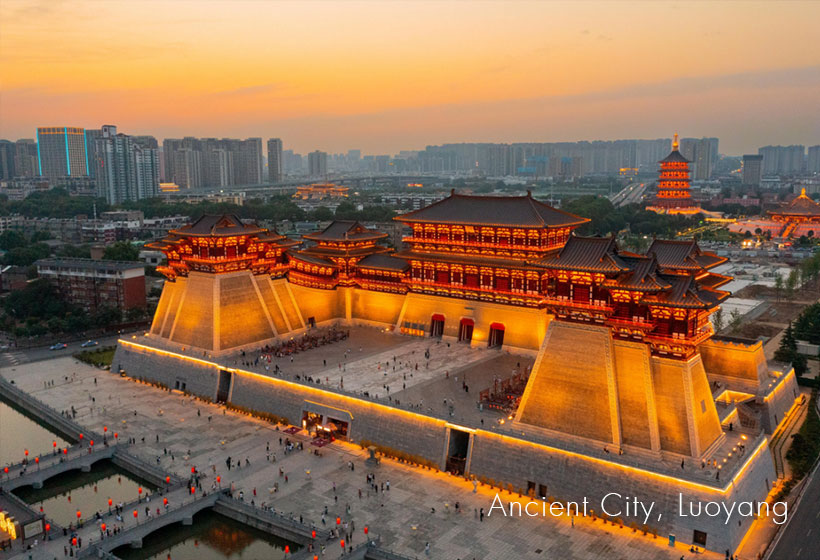 Luoyi Ancient city
Luoyi Ancient cityLuoyang, known in ancient times as Luoyi, stands as a symbol of Chinese civilization and is hailed as the “Sacred City of Culture.” As the ancient capital of thirteen dynasties, it bears countless imprints of China’s glorious past. The ancient city of Luoyi was first established in the early Western Zhou period and still retains numerous historical relics, such as the Wenfeng Pagoda, Henan Prefectural Confucian Temple, Tuoling Palace, Four-Eyed Well, and the remains of the Jin and Yuan city walls.
The Wenfeng Pagoda, a landmark of the ancient city, serves as the centerpiece around which traditional streets, courtyards, and archways have been reconstructed. With winding streams, stone bridges, an array of snack stalls, and stylish bars lining the grey-tiled lanes, the area brims with the charm of old Luoyang’s everyday life. When night falls, red lanterns illuminate the streets, and the ancient city radiates a classical beauty comparable to Xi’an’s Grand Tang Mall.
Here, you can dress traditional Hanfu attire and stroll through the streets like an ancient scholar, exploring specialty shops and experiencing intangible cultural heritage such as Ruyang Liu calligraphy brushes, Tang Sancai ceramics, and Peony porcelain. Immerse yourself in traditional craftsmanship, savor the city’s delicious street food, and enjoy the vibrant, down-to-earth atmosphere that captures the true essence of Luoyang.
- Address: Intersection of Jiudu Road and Liulin Street, Old District, Luoyang City, Henan Province
- Open Hours: 09:00—23:00
- Tour Length: 1-3 hours
Top 6: Luoyang Museum- A Window into the Ancient Capital’s Glorious Past
The Luoyang Museum serves as a gateway to exploring the rich history and culture of this ancient capital. Its extensive collection spans thousands of years, featuring artifacts from the Xia, Shang, Zhou, Sui, Tang, Five Dynasties, Song, Yuan, Ming, and Qing periods. The museum houses six themed exhibitions, including the Heluo Civilization, Treasures of Luoyang, Tang Sancai Ceramics, Han and Tang Pottery Figurines, Imperial Artifacts, and Stone Carvings.
With more than 20,000 cultural relics, the museum vividly showcases the grandeur of Luoyang’s civilization. Visitors can admire exquisite bronze ritual vessels from the Xia, Shang, and Zhou dynasties, elegant Han and Tang pottery figurines, brilliant Tang Sancai ceramics, delicate jade artifacts, and finely crafted stone carvings. Among the highlights are the bronze jue with nipple patterns, the square ding with beast-face motifs, and a white jade cup—masterpieces that exemplify the artistry and sophistication of ancient China.
- Address: Nietai Road, Luolong District, Luoyang City, Henan Province
- Open Hours: 9:00-17:00 (Closed on Mondays)
- Tour Length: 1-3 hours
Top 7: Longtan Grand Canyon--A 2.6-Billion-Year-Old Memory of the Earth
Carved by nature over billions of years, the Longtan Grand Canyon is a masterpiece of time itself, famed for its deep ravines, cascading waterfalls, and dramatic red rock formations. The landscape features striking U-shaped valleys, potholes, and ripple stones, each revealing the Earth’s ancient secrets. The most awe-inspiring sight is the “Heavenly Stele” — a 50-meter-high collapsed rock face etched with parallel lines that record twelve distinct geological eras. Celebrated as the “Gallery of Yellow River Landscapes,” the canyon captivates visitors with its ever-changing beauty, where after rain, a rare optical illusion appears to make water seem as if it’s flowing uphill.
- Address: Longtangou Village, Shijing Town, Xin'an County, Luoyang City, Henan Province
- Open Hours: 07:30—17:00
- Tour Length: 1-2 hours
Top 8: China National Flower Garden – A Feast of a Million Peonies
Located on the southern bank of the Luo River atop the ruins of the Sui and Tang city, the China National Flower Garden boasts picturesque scenery with clear waters, verdant hills, and unique rock formations. Rooted in Sui and Tang history and themed around peony culture, it is the largest specialized peony garden in China, often hailed as “the No.1 Garden of China’s National Flower.”
The garden stretches west to east across six sections — the West Entrance Area, Peony Cultural Zone, Peony History and Culture Zone, Riverside Viewing Zone, East Entrance Area, and Production and Management Zone. Highlights include Gejin Yupan Square, Huolian Jindan Square, Qiu Weng Yuxian Square, Erqiao Pavilion, Feiyan Red Makeup Square, Ouyang Xiu Stele Square, and Bai Juyi Stele Square.
Every April, over 1,200 varieties of peonies bloom across 300,000 square meters, creating a magnificent sea of flowers. In addition to native species, visitors can admire Japanese “Flower King” peonies and French “Crown” peonies in full bloom. The rare “Huolian Jindan” variety can be worth over ten thousand yuan per plant, while the legendary “Thousand-Year Peony King” has survived for more than 400 years, standing as a living testament to the enduring beauty of China’s national flower.
- Address: East of the intersection of Mangling Avenue and Huashan North Road, Luoyang City, Henan Province
- Open Hours: 6:30—19:00
- Best time: Spring
- Tour Length: 1-2 hours
Top 9: Baiyun Mountain – A Harmony of Nature and Culture
Famous for its unique pine trees, striking rock formations, and seas of clouds, Baiyun Mountain is a popular summer retreat in Luoyang and a paradise for outdoor enthusiasts. Here, mountains and waters blend into picturesque scenery, perfect for hiking, climbing, or photography.
Highlights include towering peaks like Baiyun Peak, Yuhuang Summit, and Little Huangshan; lush forests of ginkgo, peonies, red birch, and arrow bamboo; scenic waterfalls and pools such as Heilong Pool, Pearl Pool, and Qinglong Waterfall; intriguing caves and cliffside trails like Baiyun Cave, Qingshe Cave, and the Dongtian Plank Road; as well as historic temples and pavilions including Wuman Temple, Yunyan Temple, and Yuhuang Pavilion.
- Address: East of the intersection of Mangling Avenue and Huashan North Road, Luoyang City, Henan Province
- Open Hours: 6:30—19:00
- Best time: Spring
- Tour Length: 2-3 hours
Top 10: Luoyang Ancient Tomb Museum - A Timeless Witness of Chinese Civilization
Luoyang, the capital of thirteen dynasties, holds more cultural relics underground than above. The Luoyang Ancient Tomb Museum brings this “underground world” to the surface. Located on the historic Beigang Mountain, it is the world’s first museum dedicated entirely to ancient tombs. The museum showcases the finest tombs from Luoyang’s history, making it one of the largest and most comprehensive collections of its kind in the world. As China’s only specialized museum of ancient tombs, it features restored tombs from different eras—and visitors can even step inside real burial chambers.
Must-see exhibits include: Northern Wei Painted Tombs: Exquisite murals depicting the daily life of nobles. Han Dynasty Carved Stone Reliefs: Stone carvings illustrating mythological stories, banquets, and dances, providing key insights into Han culture. Tang Dynasty Brick Tombs: Fully restored tomb chambers that let visitors experience the underground world of a thousand years ago.
- Address: No. 45, Airport Road, Luolong District, Luoyang City
- Open Hours: 8:30-17:00 (last admission at 16:30, closed on Tuesdays)
- Best time: Spring
- Tour Length: 1-2 hours
Customize Your Authentic Luoyang Tour

If you are interested in the Luoyang itineraries mentioned above, please contact us, and we will be happy to customize it and provide a quote tailored to your preferences.
Alternatively, if you would like to customize your Luoyang Tour, please visit our Henan Tour Customized Center. We assure you that you will receive a reply within 24 working hours.
Informative Articles for Your Luoyang Trip
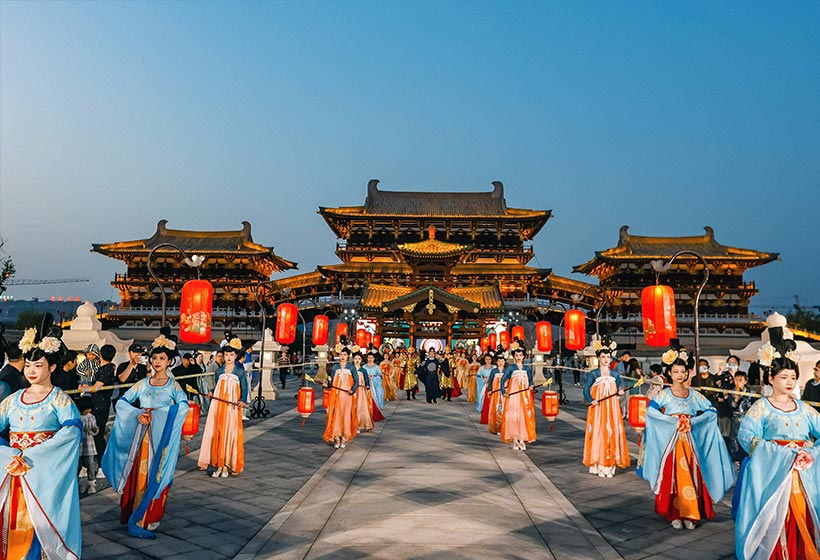 Luoyang
Luoyang- Travel Guide: attractions, weather, hotels, food, etc.
- Weather: best time and seasons to visit Luoyang
- Top attractions: well-selected top attractions in Luoyang
- Local culture: brief history, folk culture, festivals, etc.
- Top destinations: best places to visit in Luoyang
- Travel itineraries: itineraries for your reference
- Abundant activities: Luoyang cultural immersions
- Unique perspective: top interesting things to do
- Local food: what to eat while traveling in Luoyang
- Luxury hotels: accommodation to stay in Luoyang
- Luoyang Tours: customized tours for your reference
GREAT FAMILY CHINA TOUR
JULY 2024 We wanted to thank Grace at China Culture tour for organizing a great tour of China. We enjoyed our Beijing - Xian-Chengdu -Guilin -Yangshuo - Shanghai trip. Our local guides Bruce in Beijing, Susan in Xian, Jane in Chengdu, Mike in Guilin and Mary in Shanghai took care of us…read more details »
Teng Han L from SINGAPORE
Ready to Create a Unique Dream Travel?
